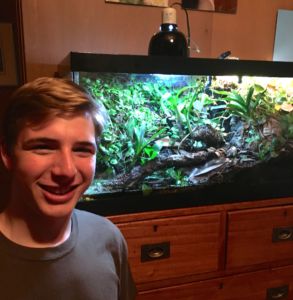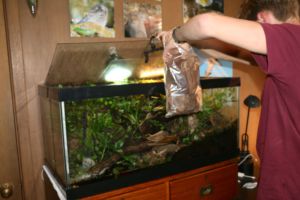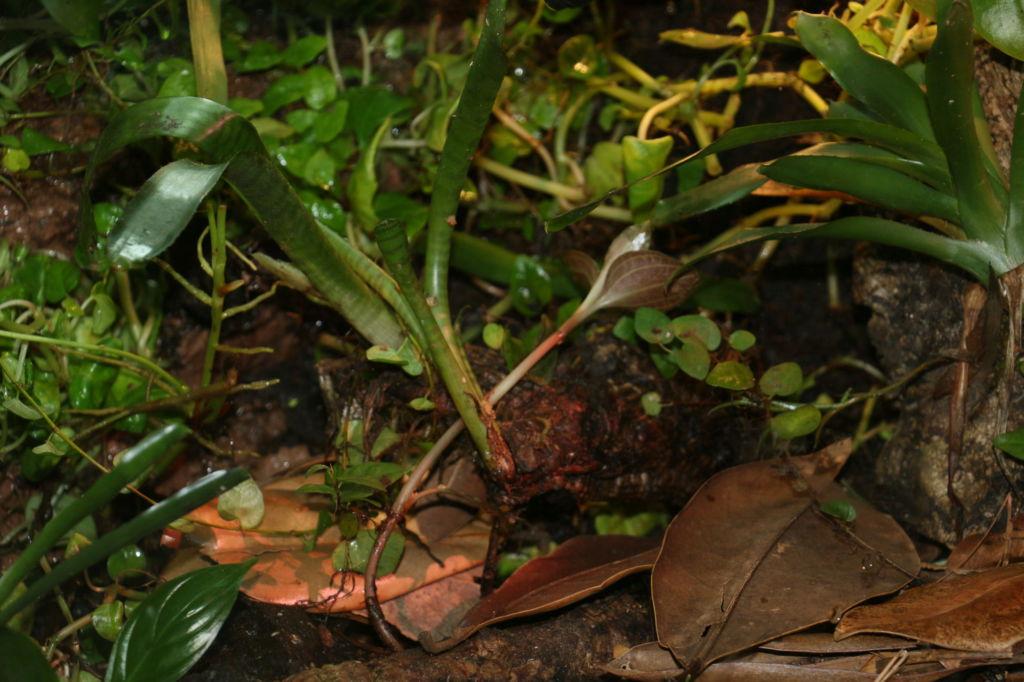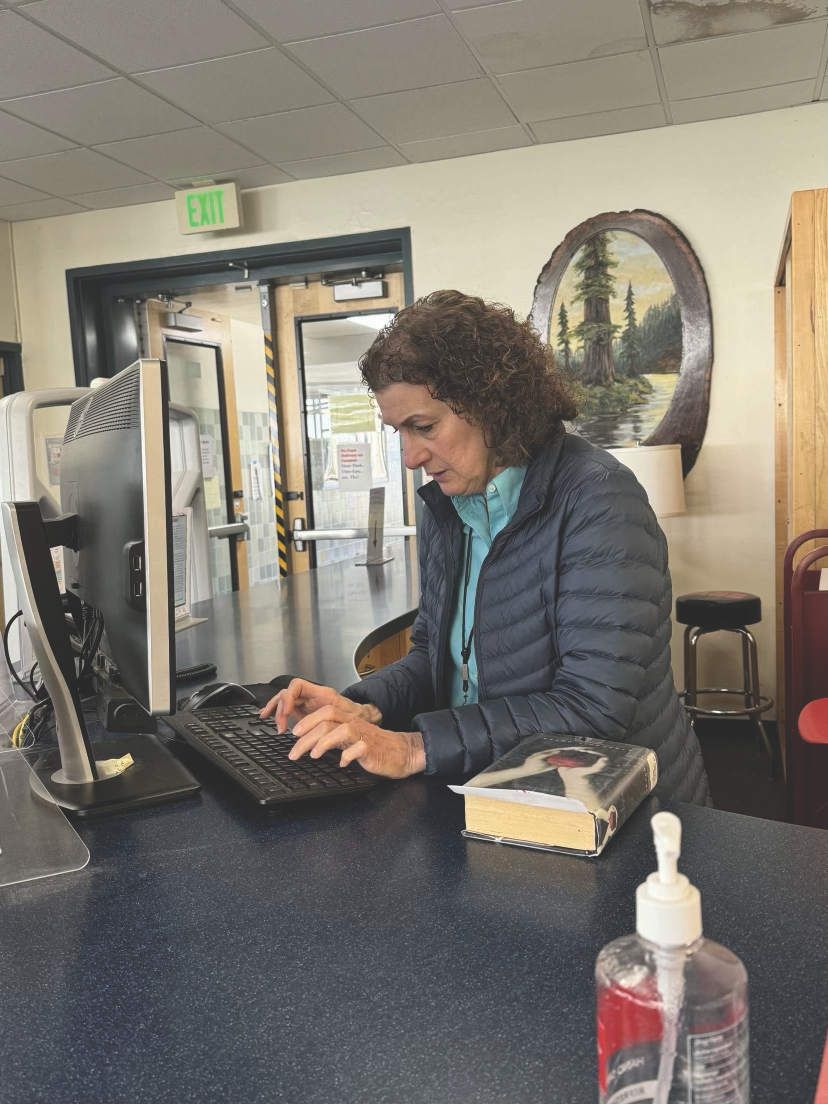A clear glass cage is opened and the sound of rustling leaves starts to emerge from the terrarium. Rocks and moss are rearranged as plants are moved to create more space for a small pool of water. Condensation drips down the glass walls and soon fruit flies are dropped into the tank. Inside the house of sophomore Caleb Jordan-McDaniels, some unique amphibians make their home.
Since seventh grade, Jordan-McDaniels has maintained a stable population of phyllobates vittatus, commonly known as the

Golfodulcean poison frog, through breeding.
“I used to live in Sonoma County on a farm. There was a creek running through it. [When] the creek would run dry and I would catch all the tadpoles that weren’t frogs yet and put them in the tank so that way they wouldn’t die and then I would let them go,” Jordan-McDaniels said.
“There is more to breeding the frogs than just putting two frogs in a cage together,” said Jordan-McDaniels.
According to Jordan-McDaniels, the frogs have to be housed in an elaborate habitat in order to be healthy. This large, clear terrarium has some very precise layers of dirt. At the bottom there are big bits of gravel with a cloth on top of it so any water will be filtered through and keep the soil fairly dry. On top of the fabric there are two more layers of soil, a mix of orchard soil, ground up coconut bark, java moss, mood moss and some dead sphagnum moss, which helps with the drainage. The final display that puts the set up together is a variety of plants and leaves with the occasional rock to help make the frogs feel at home. Creating this arrangement is one of Jordan-McDaniels’ favorite parts of breeding the frogs.

“I really love building the terrariums. Every once in awhile I’ll take it all out and re-do it,” Jordan-McDaniels said.
According to Jordan-McDaniels, although it would be much easier to take the eggs out and put them in petri dishes with filtered water which would lead to more frogs, he just likes to leave them to live naturally.
McDaniels said that he loves watching the frogs grow up and live their lives.
Jordan-McDaniels also uses a 3D printer to improve his frog’s terrariums. According to Jordan-McDaniels, he is in the process of making an automatic feeder. This feeder would be filled with the food and drop food into the habitat every other day.
Jordan-McDaniels said that he puts fruit fly food mixture and hot water into deli cups. Once the water cools a bit, he pours fruit flies in the cup and let them breed. This way, he has his own home-grown food source for the frogs. Every year or so he buys a new culture to make sure the culture of flies contains some genetic variation so the flies don’t get sick or die.
According to Jordan-McDaniels, his future plans include the automatic feeder, which should greatly improve the frog’s terrarium and help him expand his hobby.

















